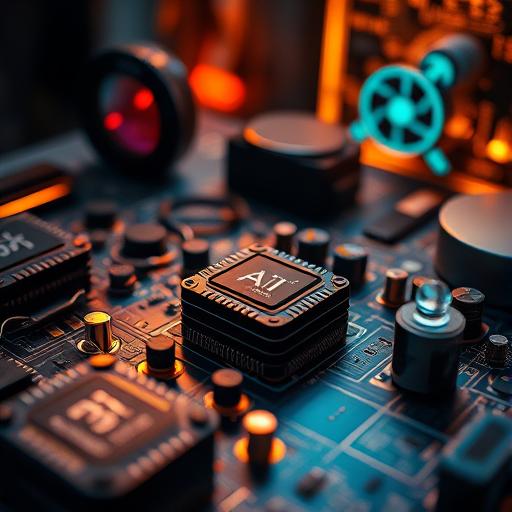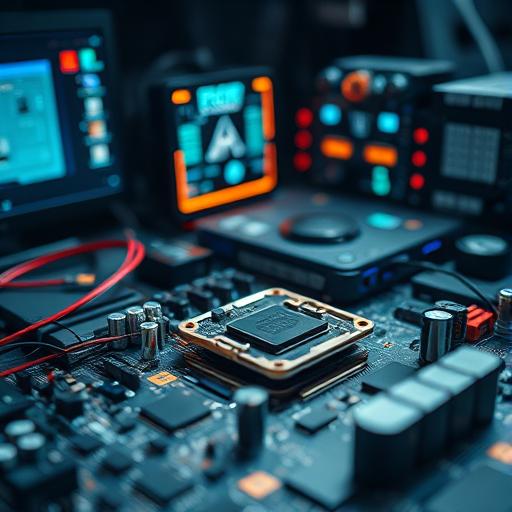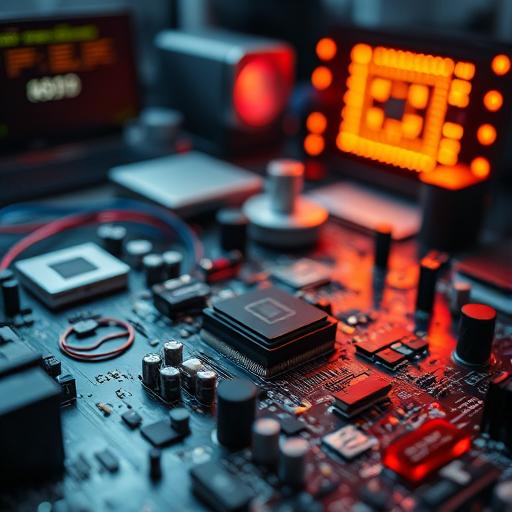Artificial Intelligence (AI) has become a cornerstone of modern technology gadgets, subtly yet profoundly changing how we interact with our devices, manage daily tasks, and even perceive the world around us. From voice assistants in smartphones to smart home systems that anticipate our needs, AI is no longer a futuristic concept—it’s a present-day reality. As these technologies evolve, understanding their role becomes essential for navigating the digital landscape and appreciating the transformative power they hold for our future.
What is AI and How Does it Work?
Artificial Intelligence refers to the simulation of human intelligence in machines programmed to think, learn, and adapt. Key subsets include Machine Learning (ML), which allows systems to improve performance through experience; Deep Learning, a specialized form of ML that uses neural networks; and Natural Language Processing (NLP), enabling devices to understand and respond to human speech. In gadgets, AI operates by collecting data through sensors or user interactions, processing it using algorithms, and analyzing the results to make decisions or predictions that enhance functionality and user experience.

Applications of AI in Modern Technology Gadgets
Smart Home Devices
AI-powered smart home devices like Amazon Echo and Google Home have redefined convenience. Voice assistants such as Alexa and Google Assistant use NLP to respond to commands, while machine learning optimizes automation routines—from adjusting thermostats based on habits to managing energy consumption for efficiency. These systems create personalized environments, making homes smarter and more intuitive.
Mobile Devices and Virtual Assistants
Smartphones now integrate AI to streamline tasks and enhance performance. Virtual assistants like Siri and Google Assistant leverage ML to predict user behavior and manage schedules, while facial recognition and adaptive battery management rely on AI for improved security and efficiency. Features such as real-time language translation and photo enhancement further demonstrate how AI elevates mobile experiences, turning phones into intelligent companions.
Wearables and Health Monitoring
Wearables like the Apple Watch and Fitbit utilize AI to transform health tracking. These devices analyze biometric data—heart rate, sleep patterns, and physical activity—to provide actionable insights. For example, AI can detect irregular heart rhythms and alert users to potential health risks. Over time, these gadgets learn user habits, offering tailored recommendations that promote wellness and proactive health management.
Gaming Consoles and Entertainment
AI is revolutionizing gaming and entertainment through personalized interactions and immersive experiences. Consoles like PlayStation and Xbox use machine learning to adjust game difficulty based on player skills, ensuring a balanced challenge. Streaming platforms employ recommendation algorithms to suggest content aligned with user preferences, while AI-driven graphics and animation create lifelike environments. These innovations make entertainment more engaging and responsive than ever before.

Benefits and Advantages of AI in Modern Technology Gadgets
The integration of AI into gadgets offers unparalleled convenience and efficiency. Devices can automate repetitive tasks, learn from user behavior, and provide real-time insights, saving time and improving productivity. AI also enhances security through biometric authentication and predictive threat detection, safeguarding personal data. Additionally, predictive maintenance in smart devices minimizes downtime, ensuring longevity and reliability while optimizing performance for a smoother user experience.
Challenges and Limitations of AI in Modern Technology Gadgets
Despite its benefits, AI in gadgets faces challenges like data privacy concerns, algorithmic bias, and reliance on high-quality data. Smart devices often collect sensitive user information, raising questions about how it’s stored and used. Biases in AI models can lead to skewed recommendations or inaccurate outputs, such as facial recognition errors. Moreover, poor data quality may result in flawed decisions, limiting the effectiveness of AI systems. Addressing these issues is critical to ensuring trust and fairness in technology.
Future of AI in Modern Technology Gadgets
Emerging trends like edge AI—where processing occurs locally on devices—will reduce latency and boost privacy. Explainable AI is gaining traction to make algorithms more transparent, fostering user trust. Over the next five years, expect AI to become more integrated into everyday gadgets, from advanced healthcare wearables to AI-driven augmented reality (AR) interfaces. Innovations in natural language understanding and hyper-personalization will unlock new applications, making technology even more intuitive and responsive.
Conclusion
AI has seamlessly woven itself into the fabric of modern technology gadgets, enhancing everything from home automation to entertainment. While its benefits are vast, addressing challenges like privacy and bias is essential to harness its full potential responsibly. As AI continues to evolve, its role in shaping smarter, more adaptive technologies will only grow, promising a future where devices understand and anticipate our needs in ways we’re just beginning to imagine.
Frequently Asked Questions (FAQs)
What is the difference between AI and machine learning?
Comparison table for What is the difference between AI and machine learning?
Artificial Intelligence (AI) is a broad field focused on creating machines capable of performing tasks that require human intelligence. Machine Learning (ML) is a subset of AI that involves training algorithms to learn patterns from data and improve over time without explicit programming. For example, an AI system might use ML to recognize speech or predict user preferences.
How does AI improve device security in modern technology gadgets?
AI enhances security through features like biometric authentication (e.g., fingerprint or facial recognition) and predictive threat detection. These systems analyze patterns to identify anomalies, such as unauthorized access attempts, and respond in real time. AI also strengthens encryption and adapts to new vulnerabilities, offering dynamic protection for user data.

Can AI in modern technology gadgets replace human intelligence?
While AI can automate tasks and process data at scale, it complements rather than replaces human intelligence. AI lacks human creativity, empathy, and ethical judgment. For instance, a virtual assistant can manage calendars but cannot understand nuanced emotional contexts. Its role is to augment human capabilities, not supplant them.
How will AI evolve in modern technology gadgets in the next 5 years?
In the next five years, AI in gadgets will likely become more decentralized with edge AI, enabling faster local processing. Expect advancements in personalization, such as AI-driven AR glasses that adapt to user behavior. Healthcare wearables will offer more accurate diagnostics, and explainable AI will make technology decisions more transparent and trustworthy.
What are the potential risks of AI in modern technology gadgets?
Potential risks include data misuse, algorithmic bias, and overreliance on automated decisions. For example, smart devices may inadvertently expose private conversations if not properly secured. Biased algorithms in recommendation systems or security tools could lead to unfair outcomes. Ensuring ethical AI development and robust safeguards is vital to mitigating these risks.
